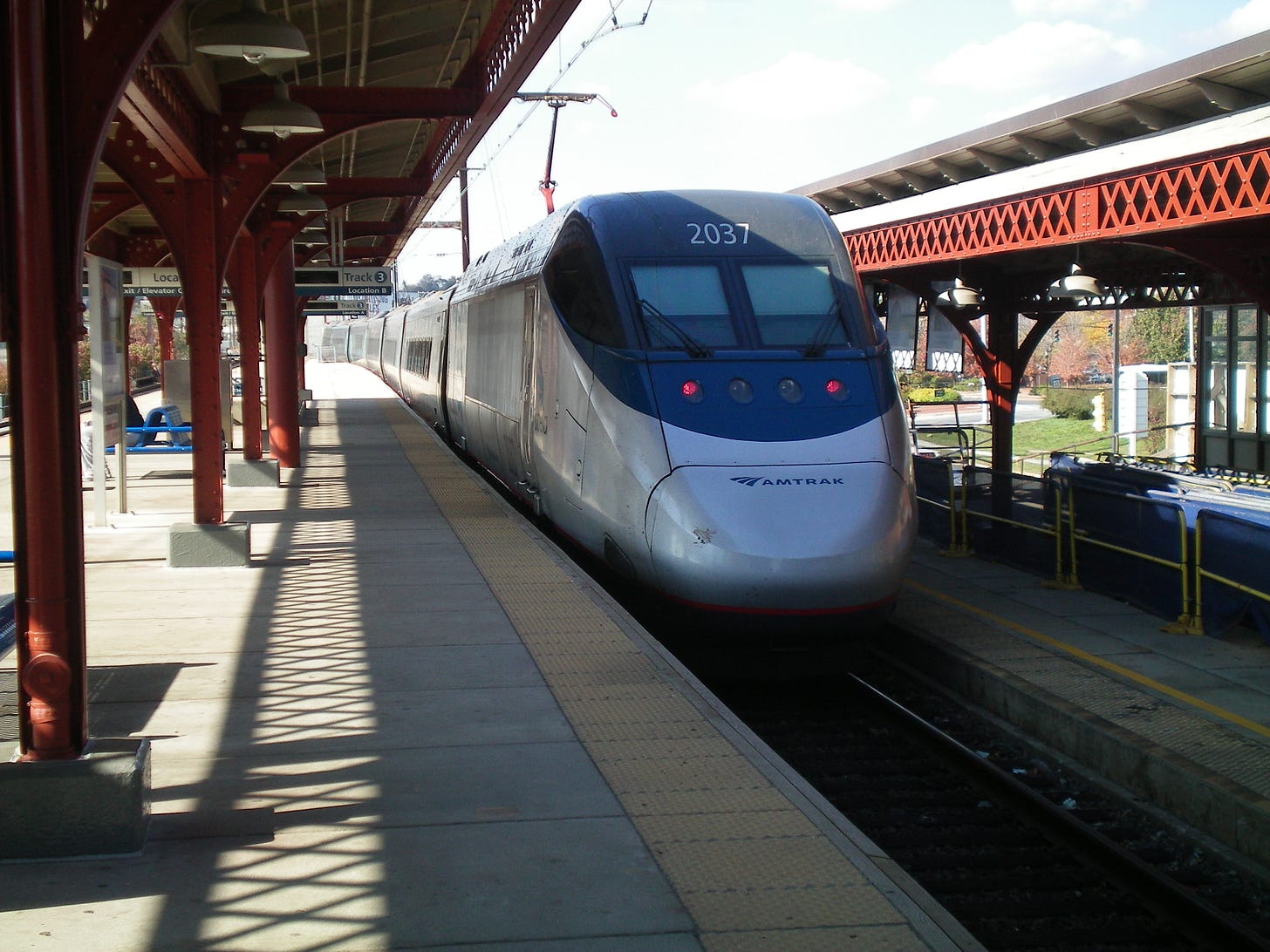Currently our primary energy source is the fossil fuels: coal, natural gas and oil. However, we are experiencing a gradual shift from these hydrocarbons to renewable electricity ― mostly generated by solar panels and wind turbines. This means that process safety work will increasingly involve analysis of electrical systems.
One example of this transition is the likely development of battery-powered trains, at least for commuter rail. In this post we consider the current state of this development.
Locomotive Power Options
Virtually all railway locomotives in the United States are electrically powered. The electricity that they use comes from one of three sources:
Overhead high voltage wires such as those used by Acela trains on the Boston-Washington route. (The voltage is typically in the 12 – 25 kV range.)
A third rail adjacent at ground level. This is what most subway/metro systems use. (The Washington Metro third rails are 750 volts.)
A diesel/generator combination within the locomotive. This is what the trains , both passenger and freight, use south of D.C. use.
(Other nations do use locomotives in which a diesel engine drives the wheels directly.)
Battery Powered Trains
A fourth method of providing electricity to a locomotive is to use batteries. The locomotive’s batteries are recharged at the end of each journey. This idea is still in the experimental stage, but it looks promising. Work on this option is being carried out on the Great Western Railway (GWR) in England, and in Japan and Germany.
Advantages of battery use include:
There is no need to install a third rail or overhead catenary, thus substantially reducing capital expenditure and service disruptions.
Existing locomotives can be retrofitted with batteries ― once more materially reducing capital cost.
Battery technology has become much cheaper in recent years, and there is reason to believe that this trend will continue.
The technology is still being tested, but ‘Fare-paying passengers in west London are expected to ride the new trains from the spring’. In another article, a ‘team of GWR engineers on board the test train claim it could have travelled more than 120 miles on a single charge’.
Hybrid Locomotives
We are already seeing a development on those lines in the north-east passenger corridor. Currently trains arriving at Washington D.C. from the north are powered by high voltage overhead wires. There are no wires south of D.C., therefore through trains need to stop in D.C. for about 30 minutes while the locomotives are swapped out to diesel-electric (southbound, and the reverse when heading north). However, it is likely that we will soon see hybrid locomotives that can draw power either from an overhead catenary or from their own diesel engine.
The next logical step ― at least for commuter trains ― is to include a battery option.
Electrification and Process Safety
We will continue the discussion to do with the ‘Electrification of Process Safety’ in future posts. In the meantime, here are a few issues to consider.
The use of lithium-ion batteries introduces risks such as thermal runaway, fire, and explosion hazards.
Wind and solar power create risks such as electrical fires, lightning strikes, and mechanical failures (e.g., turbine blade fractures).
Integrating solar and wind energy into industrial processes can introduce operational variability, requiring dynamic safety systems to manage unexpected process disruptions or energy
The coexistence of traditional hydrocarbon processes with renewable technologies will create new inter-dependencies and risks,
Emergency Response procedures will have to adapt to all these changes.








